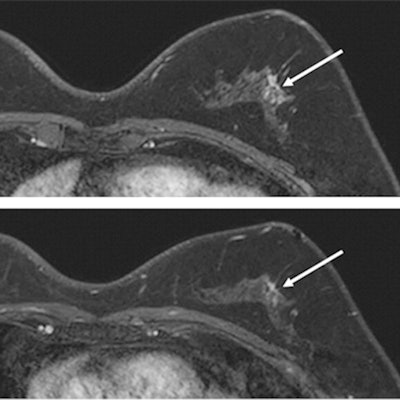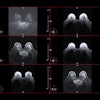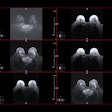
Abbreviated breast MRI can serve as a viable alternative to conventional MRI when it comes to high-risk supplemental screening, suggests research presented at the RSNA annual meeting in Chicago.
In her presentation, Dr. Marissa Lawson from the University of Washington in Seattle showed results from her team's study, which also compared the performances of the two MRI methods to contrast-enhanced mammography (CEM).
"For abbreviated MRI compared to clinical MRI, there were no significant differences identified, which suggests that abbreviated MRI may be an acceptable alternative to the standard MRI protocol," Lawson said.
CEM and MRI both show promise in supplemental breast cancer screening. However, researchers leaning toward the MRI side highlight the modality's imaging potential without the need for extra radiation dosage. Still, MRI is not without its limitations. These include cost, availability, and less specificity, among others.
Abbreviated MRI has been shown to decrease imaging protocol time to less than 10 minutes while not sacrificing imaging quality by obtaining fewer sequences, previous studies suggest.
"These offer an opportunity for increased access and efficiency for high-risk screening," Lawson said.
The Lawson team wanted to compare the performance of the three modalities in breast cancer screening. Seven breast imagers interpreted images from all three modalities. The team looked at a total of 492 CEM and abbreviated MRI interpretations from 246 women with an average age of 51.7 years. Of the 50 MRIs with lesions recommended for biopsy, the researchers reported that nine had malignant pathology.
They also found that while CEM showed pros and cons, abbreviated MRI was on par with standard MRI when it came to performance metrics.
| Comparison between CEM, MRI, and abbreviated MRI in high-risk breast cancer screening | |||
| CEM | MRI | Abbreviated MRI | |
| Sensitivity | 61.1% | 100% | 88.9% |
| Specificity | 87.8% | 80.2% | 75.7% |
The team also reported that CEM had lower recall rate (-8.7%) and lower false positive biopsy recommendation rate (-97.6). However, these are offset by CEM also having a lower cancer detection rate -14.2) when compared with MRI.
CEM also had a significantly lower recall rate when compared with abbreviated MRI (-12.6%), as well as lower false-positive biopsy recommendation rate (-115.9). The Lawson team reported no significant differences between the two when it came to cancer detection rate or positive predictive values.
While CEM had lower recall and false positive biopsy recommendation rates, as well as higher specificity, these were offset by lower sensitivity and cancer detection rate. Lawson et al suggested that these performance differences should further consider patient population characteristics before being used more widely.




















